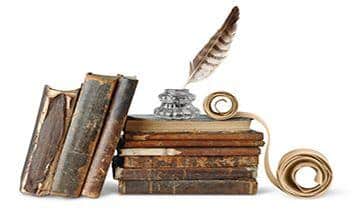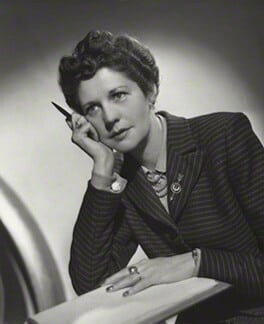The Subgenres of Historical Fiction
What is historical fiction? An accepted definition is that it is fiction set 50 or more years ago and requires a writer’s reliance on research. Sir Walter Scott in England began the genre we recognize as historical fiction, but its origins lie in the more distant past. Historical fiction’s appeal has not dulled over time, although it has reached new heights from the 1990s to the present.
Over time, this genre has developed more than 10 identifiable subgenres.
Traditional Historical Fiction
The traditional form is what is generally thought of as historical fiction. It typically has a historically accurate plot. Seminal examples among modern writers include Colleen McCullough’s “Masters of Rome” series, and Sharon Kay Penman’s books set in the Middle Ages of Great Britain and France.
Multi-Period Epics, Series, and Sagas
James Michener’s “Chesapeake” covered the history of a location from its Native American past to modern times. Norah Loft’s “The Suffolk Trilogy” covered the history of one house from the 14th century to the 1950s. The “North and South” trilogy by John Jakes is a saga of how the Civil War tests the ties of two families, a Northern family from Pennsylvania and a Southern one from South Carolina.
Historical Romantic Fiction
An example of historical romantic fiction is Anya Seton’s “Katherine” about a real-life love story between the Plantagenet John of Gaunt, Duke of Lancaster and Katherine Swynford, Geoffrey Chaucer’s sister-in-law.
Historical Western Fiction
These comprise stories about the American West. How they cover the subject matter has evolved since they were first written in the 1800s, shifting from an unsympathetic view of Native Americans to a more sympathetic perspective in recent time.
Mysteries, Thrillers, and Adventure Novels
An example of historical mysteries is Ellis Peters’ series about crime-solving Brother Cadfael, a twelfth-century monk and herbalist. Peters’ “Cadfael Chronicles” is credited with popularizing this subgenre.
Historical thrillers include “Enigma” by Robert Harris, “The Coffee Trader” by David Liss, and “The Alienist” by Caleb Carr. Bernard Cornwell’s series about Richard Sharpe is an example of historical adventure.
Time-Travel, Alternate Histories, Fantasy, Literary and Christian Novels
“The Shining Girls” by Lauren Beukes is a historical time-travel thriller, and Connie Willis’” Doomsday” is another example of time-travel historical novel. “The Years of Rice and Salt” by Kim Stanley Robinson is an example of an alternate history novel.
Michael Livingston’s “Shards of Heaven,” Tim Powers’ “On Stranger Tides,” and Susanna Clarke’s “Jonathan Strange and Mr. Norrell” are examples of historical fantasy. Catherine Marshall’s “Christy” is an example of a Christian historical fiction.
The appeal of reading about the past never fades. Inventive writers delight new generations of readers by finding endless inspiration.
- Published in Writing & Editing Resources
Young Adult Historical Fiction and Its Value
Historical fiction can offer more than escapism to adolescent readers. Re-creations of history in historical fiction (when based on accurate evidence) sheds light on history in a way that facts by themselves cannot. It can enlighten young adults (YA) about ways of being and conflicts in another time, and also resonate with their own pathway to maturity.
Since the 1990s—A New Era of Popularity
Prior to the 1990s, teachers had limited choices in what they could assign to their students. However, from the mid-1990s onwards there has been greater choice in historical fiction for this age group. Scholastic’s “Dear America” series boosted the genre’s popularity, and genre-blending fiction offered non-history loving YA readers a different reading experience.
Publishers now offer individual novels and series of historical fiction for this age group. As of February 2017, the Young Adult Library Services Association (YALSA) will have a Teen Book Finder Database—a one-stop shop for finding award winners and selected lists. Users will be able to search the database and print customized lists. This will make it easier for teachers to select reading lists. YA writers should take note, as school libraries are major purchasers of books in this category.
The Challenge for YA Fiction Authors
Young adult fiction authors have to create an attention-getting and reader-sustaining story, make a certain period interesting for YA readers, and devise a story that is suitable for that period. To make it more palatable for young female readers, some authors distort the reality of women’s roles in the past and the customs of that time. However, it is better to explain the differences as YA readers are capable of understanding that people lived differently in the past.
An Example of Genre-Bending YA Historical Fiction
Maggie Stiefvater, a YA author herself, selected “Code Name Verity” by Elizabeth Wein as her favorite book for 2012 in her list of “5 Young Adult Novels That You’ll Never Outgrow,” published on December 20, 2012. This book illustrates the genre-blending appeal that can hook YA readers of this or an older age group. The novel is about two girls who join the British war effort in World War II.
YA Fiction Also Enjoyed by Adults
A market that has developed in the past 50 years, the children’s book industry has expanded exponentially. A major reason is that it also attracts adult readers. A 2012 survey revealed that 55 percent of YA fiction readers are adults. Young adult books often outsell even the most popular adult books. Young adult fiction excels in providing escapist appeal.
The inventiveness reflected in YA literature is rare in adult literature. Adults also enjoy the nostalgia evoked by YA historical fiction and other subgenres of the YA fiction category.
- Published in Writing & Editing Resources
Norah Lofts—an Underappreciated Author Writers Can Learn From and Enjoy
Alison Weir has publicly praised Norah Lofts and has also been a force in the republication of Lofts’ books. There is growing appreciation of this unheralded writer.
Lofts was a history teacher who became a prolific writer of mostly historical fiction and biographies, although she did write mysteries and other types of fiction as well. Her eye for detail and place and her use of book series offer writers an opportunity to learn from an expert in historical fiction.
Sir Walter Scott—the First Historical Novel Author
A genre first identified with Sir Walter Scott and “Waverley,” historical novels have received critical recognition in this century. Historical fiction is no longer considered middlebrow and beneath critical esteem. The 2014 Man Booker Prize was awarded to Richard Flanagan’s “Narrow Road to the Deep North,” and both of Hilary Mantel’s books about Thomas Cromwell received the Man Booker Prize as well. James Robertson’s books about Scotland have also earned critical acclaim.
Re-reading Scott’s first book can still move readers in our time because of its treatment of the protagonist, what he experiences, his evolution, and the difficult issues he wrestles with. Scott followed his initial success with many historical fiction novels, primarily to get out of debt. Then, as now, historical fiction gained a large following.
Norah Lofts and the Female 20th Century Historical Fiction Authors
Female authors of historical fiction dominated the genre during the 20th century, although their work varied in quality. Norah Lofts, Anya Seton, Mary Renault, and Eleanor Hibbert (who wrote as Victoria Holt and Jean Plaidy) made their own interpretations of history and its characters. Norah Lofts produced outstanding books focused on old houses and their histories. Her “The Suffolk Trilogy” stands out as historical fiction created about a place.
Alison Weir has particularly praised the “Suffolk Trilogy” as the best historical fiction she has ever read. She has also described the trilogy as “one continuous book” even though it is a set of three books published years apart. “The Town House” was published in 1959, the “House at Old Vine” in 1961, and “The House at Sunset” in 1962. Shifting viewpoints by showing the unfolding of time through different eyewitnesses/perspectives gives these books additional layers of meaning.
For a new talent interested writers can check out Sarah Gristwood’s first fictional work, “The Girl in the Mirror.” Alison Weir, on her website, has praised this book for setting “a new benchmark for historical novels.”
- Published in Writing & Editing Resources
Discipline: A Needed Asset for Writers
Some say that the main thing a writer needs in order to succeed is talent. Although this is certainly true, a close second for the most needed asset in writing is good old-fashioned discipline. You can have all the talent in the world, but if you don’t put the pen to the paper then nobody will ever know it.
Different Types of Writing Discipline
There are many different types of writers and many different types of discipline that will work for each writer. One form of discipline that may work very well for one writer will not for another, so it is important to search for the level of writing discipline that will work for you.
If you do not suffer from writer’s block or lack of inspiration, set a writing goal for yourself each day. If you are working on a novel, for example, try writing one perfect page per day. This may not sound tough, but you will find that it is quite a challenge. Doing so requires discipline and builds up your disciplinary skills. And just think, if your novel is 250 pages, then in less than a year that first draft will be completed.
Other writers spend weeks, months, or even years waiting for inspiration. If they attempt to write during periods of non-inspiration then the results do not come out well. If you are one of these writers, it doesn’t mean you can’t develop a disciplinary routine. Try to set a goal to write something during a specific timeframe. For example, start a novel outline and vow to complete one outlined chapter per week. Working on this outline may get you excited and thinking about the plot and inspire actual writing of the story.
Your Favorites Had Discipline, Too
If you’re skeptical or hesitant about applying discipline to your writing or are simply trying to come up with a method that works best for you, look to your favorite writer for help. Do you love Ernest Hemingway? Keep in mind that Hemingway, when working on a novel, would write religiously each day from just after breakfast until well into the night. Is Philip K. Dick a favorite of yours? When working on a novel he would write from the time he woke up until the time he went to sleep, pausing only to eat.
Behind every talented writer is the discipline needed to get that talent down on the page properly. You already know that you have the talent; now adopt the discipline to reach your desired accomplishments as a writer.
- Published in Writing & Editing Resources




